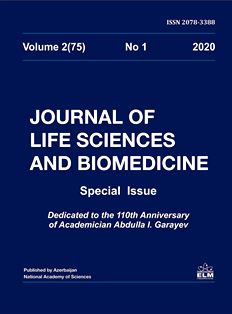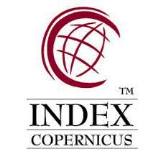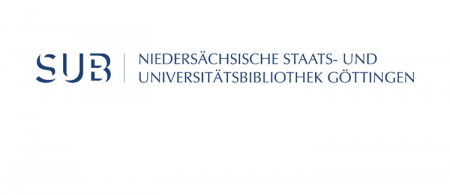
Species composition of anamorphic fungi on medicinal plants in Azerbaijan
Research article: Species composition of anamorphic fungi on medicinal plants in Azerbaijan
Authors: K.F. Bakhshaliyeva1, N.R. Namazov2, A.A. Yusifova3, S.M. Jabrailzade3, P.Z. Muradov1*
1 Institute of Microbiology, Azerbiajan National Academy of Sciences, 103 M.Mushfig, Baku AZ1004, Azerbaijan
2 Sumgayit State University, 43rd block, Sumgayit AZ 5008, Azerbaijan 3 Azerbaijan State Pedagogical University, Uzeyir Hajibayli 68, Baku AZ 1000, Azerbaijan *For correspondence: mpanah@mail.ru
Accepted for publication: 01 October 2019
Abstract:
This work was devoted to the study of mycobiota of the medicinal plants included in the flora of Azerbaijan, and pathologies caused by the anamorphic fungi. The results demonstrated that the anamorphic mycobiota of the medicinal plants (57 species) in the conditions of Azerbaijan is abun-dant and various and the mycobiota of the medicinal plants of Azerbaijan consists of 110 species of anamorphic fungi belonging to 22 genera. The most representative genus consisting of 10 and more species in each type are: Septoria – 14, Penicillium – 12, Ascochyta – 11, Fusarium – 10, Aspergillus – 10, other types are represented by 1-8 species. It was also demonstrated that the discovered fungi include the species which cause the different diseases (ascochitosis, septorioz, necrosis, spotting, ru-bigo, powdery mildew, botritis disease, wilting, phomosis etc.), and the frequency of occurrence of the activators of these pathologies varies greatly within 0.001-17.6%. Among the fungi found on medicinal plants, there are few toxigenic species. The presence of toxigenic fungi and their mycoto-xins on the plants used for medicinal purposes is unfavorable and justifies the development of mis-sing or non-existing approaches regulating both the presence of fungi and the quantity of their my-cotoxins
Keywords: Medicinal plants, mycobiota, anamorphic fungi, fungal diseases, frequency of occurrence
References:
Anater A., Manyes L., Meca G., Ferrer E., Lu-ciano F. B., Pimpão C. T. et al. (2016) Myco-toxins and their consequences in aquaculture: a review. Aquaculture, 451: 1-10. 10.1016/j.aqua-culture.2015.08.022
Chen Sh., Yu H., Luo H., Wu Q, Li Ch., Stein-metz A. (2016) Conservation and sustainable use of medicinal plants: problems, progress, and prospects. Chin. Med., 11: 37. doi: 10.1186/s13020-016-0108-7
Crous P.W., Gams W., Stalpers J.A., Robert V. and Stegehuis G. (2004) MycoBank: an online initiative to launch mycology into the 21st cen-tury. Studies in Mycology, 50: 19-22
Doehlemann G., Ökmen B., Zhu W., Sharon A. (2017) Plant Pathogenic Fungi. Microbiol Spectr., 5(1): doi: 10.1128/microbiolspec. FUNK-0023-2016.
Handbook of Mycological Methods (2006) http://www.fao.org/fileadmin/user_upload/ agns/pdf/coffee/Annex-F.2.pdf
Horst K.R. (2013) Westcott’s Plant Disease Handbook. 8th Ed. New York: Springer, 826 p.
Hua L., Yong Ch., Zhanquan Z., Boqiang L., Guozheng Q., Shiping T. (2018) Pathogenic mechanisms and control strategies of Botrytis cinerea causing post-harvest decay in fruits and vegetables, Food Quality and Safety, 2(3): 111–119.
Ivanise B.S. et al. (2018) Use of medicinal plants in the treatment of erysipelas: A review. Phcog Rev., 12: 200-207.
Kirk P.M., Cannon P.F., Minter D.W., Stalpers J.A. et al. (2008) Ainsworth & Bisby’s Dictio-nary of Fungi. CAB International, 771 p.
Klich M.A. (2002) Identification of common As-pergillus species. Utrecht: CBS, 116 p.
Mehdiyeva N.R. (2011) Biodiversity of medicinal flora of Azerbaijan. Baku: Letterpress, 186 p.
Noudèkè N.D. et al. (2017) Inventory of medici-nal plants used in the treatment of diseases that limit milk production of cow in Benin. Journal of Advanced Veterinary and Animal Research, 4(1): 1-14. http://doi.org/ 10.5455/javar.2017.d183
Robert V., Stegehuis G., Stalpers J. (2005) The MycoBank engine and related databases. http://www.mycobank.org
Safaraliyeva E.M. (2019) General characteristics of mycobiota of gray-brown soils affected by various anthropogenic impacts in Azerbaijan. Int. J. Curr. Microbiol. App. Sci., 8(07): 1712-1718. doi: https://doi.org/10.20546/ijc-mas.2019.807.203
Safarova A.Sh. et al. (2018) Mycobiota and fungicide impact of Alhagi mourorum Medik. Sylwan journal (Poland), 162(4): 79-84.
Sarkhosh A. et al. (2018) In vitro evaluation of eight plant essential oils for controlling Colleto-trichum, Botryosphaeria, Fusarium and Phytophthora fruit rots of avocado, mango and papa-ya. Plant. Protect. Sci., 54: 153-162. doi: 10.17221/49/2017-PPS
Sutton D., Fothergill A., Rinaldi M. (2001) The determinant of pathogenic and conditionally pat-hogenic fungi. M: The World, 468 p.
Vincent R., Duong V., Ammar B.H.A. et al. (2013) MycoBank gearing up for new horizons. IMA Fungus, 4(2): 371-379.
Yuan H. et al. (2016). The traditional medicine and modern medicine from natural products. Molecules, 21: 559; doi:10.3390/molecules 21050559























